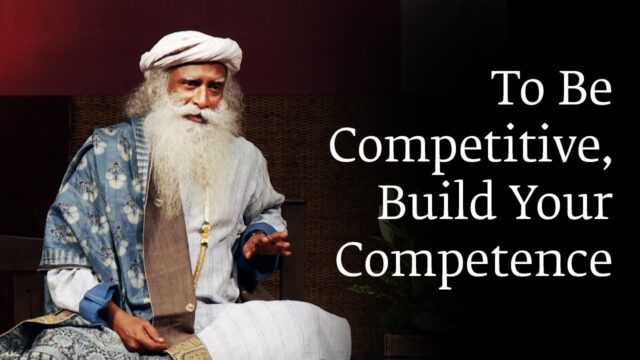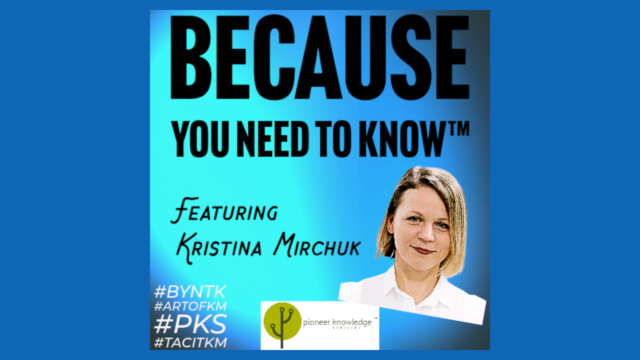
Modelling individual KM competencies [EKM Series]
Editor’s note: This is a continuing serialisation of edited portions of Andre Saito’s PhD.
In this article a model of individual KM competence for knowledge managers is proposed, consisting of three main elements. The first two, KM activities and KM capabilities, show the correspondence between a set of presumed KM-related activities and a set of individual capabilities required for their effective performance. A third element describes four major perspectives on KM, which determines the scope of the KM activity and consequently the set of activities comprising it, being information-, human-, computing- and strategy-oriented.
The model is complemented with a list of typical KM activities, grouped according to the perspective which most likely supports them, and six proposed categories of KM capabilities, labeled strategic, organizational, knowledge-oriented, technological, inter-personal and personal, along with a list of some typical examples.

Proposed model of KM competence
The four perspectives on knowledge management
Information-oriented KM
- Knowledge as relevant content
- KM as a information management, usually a set of knowledge processes (e.g. identify, organize, use)
- Typical research topics: information organization; information needs and uses; information retrieval; KM systems; process-oriented KM
- Knowledge as replicable experience
- KM as codification of expertise and experience of individuals and teams
- Typical research topics: organizational memory; ways to capture tacit knowledge; management of expertise
Human-oriented KM
- Knowledge as social practice
- KM as cultivation of shared contexts and collective engagement in action and practice
- Typical research topics: context; identity; communities of practice; social capital; social networks
- Knowledge as sense-making
- KM as inquiry, negotiation of meaning and organizational change
- Typical research topics: enactment; organizational culture; interests and agency; power and conflict; symbolism and rhetoric; legitimacy
Computing-oriented KM
- Knowledge as intelligent computing
- KM as computation of data and information
- Typical research topics: knowledge discovery and data mining; intelligent agents; ontologies
- Knowledge as systems thinking
- KM as modeling systems for decision making
- Typical research topics: simulation, optimization, forecasting, complex systems
Strategy-oriented KM
- Knowledge as organizational capabilities
- KM as knowledge creation, transfer and protection for building sustainable competitive advantage
- Typical research topics: knowledge creation; dynamic capabilities; innovation management; regional clusters; collaboration; knowledge strategies
- Knowledge as the foundation of the organization
- KM as knowledge-based managerial practice
- Typical research topics: knowledge-based theory of the firm; resource-based view; evolutionary perspectives
Typical KM activities grouped according to the four perspectives
Information-oriented
- Conducting knowledge audits (i.e., knowledge needs and gaps)
- Mapping existing knowledge and knowledge processes
- Designing an information architecture and developing information policies
- Implementing systems for content publication (e.g., portals, document / content management)
- Building knowledge repositories and online libraries
- Facilitating knowledge transfer and sharing (e.g., best practices, lessons learned)
- Facilitating access to expertise (i.e., profiling experts around the organization)
- Capturing knowledge from experts, teams and experienced employees
- Integrating knowledge capture, sharing and retrieval around business processes
- Providing technological infrastructure for knowledge processes
- Advocating the value of knowledge and KM
- Creating new KM-related roles, positions and units
- Adapting incentive, assessment and compensation systems for KM
Human-oriented
- Promoting a knowledge-oriented culture
- Cultivating communities of practice
- Creating cross-functional teams and task forces
- Training and developing personnel (e.g., workshops, mentoring, e-learning)
- Adapting the physical space and infrastructure to facilitate knowledge creation
- Mapping social networks (i.e., patterns of interaction between people)
- Implementing systems for communication and collaboration (e.g., groupware, conferencing)
Computing-oriented
- Developing and implementing systems for knowledge representation (e.g., ontology engineering, semantic web services)
- Developing and implementing systems for decision support (e.g., OLAP, expert systems, case-based reasoning)
- Developing and implementing systems for knowledge discovery (e.g., data and text mining, search and retrieval)
Strategy-oriented
- Prioritizing strategic knowledge (e.g., knowledge vision, technology roadmap)
- Managing the innovation process (e.g., R&D, product development)
- Promoting and developing creativity and innovation
- Creating new knowledge-based products and services
- Developing alliances and partnerships for knowledge creation and transfer
- Measuring the value of intangible assets (i.e., intellectual capital)
- Managing intellectual property (e.g. patents, licenses, copyright)
- Building knowledge on the competitive environment (i.e., competitive intelligence)
- Developing approaches and strategies to implement KM
- Evaluating the impact of KM initiatives
Sample KM-related capabilities, grouped into six categories
Strategic
- Analyzing the organization’s environment
Understands the external context (e.g. market, competitors, industry, regulations); identifies key issues relating to performance.
- Recognizing organization’s capabilities
Comprehends the organizational structure; distinguishes core business processes; realizes how value is created within the organization.
- Developing a KM strategy
Identifies knowledge valuable to the organization; develops strategies and initiatives to acquire, create, transfer, and protect it.
- Demonstrating KM results
Associates KM benefits to organization’s goals; gathers evidence of the impact of KM initiatives; establishes metrics and indicators.
Organizational
- Interpreting organization’s culture
Recognizes the shared values, norms and assumptions that guide how people behave and interact in the organization; identifies levers of organizational change.
- Managing organizational change
Defines approaches and strategies for change; involves and engages people; understands and deals with resistance; monitors and adjusts actions.
- Advocating KM
Creates and promotes a KM vision; educates on KM’s benefits, principles and practices; advertises the value of KM; fosters a KM-oriented culture.
- Developing people and teams
Provides guidance, feedback and support; helps others to perform effectively; offers opportunities and facilitates the development of others.
- Adapting organizational structure and instruments
Creates new roles, functions, and units; develops incentive mechanisms; adjusts assessment and compensation systems; change physical space and infrastructure.
- Handling organizational politics
Recognizes divergent individual, group and organizational interests; understands relations of power and influence; reconciles conflicting interests; forms alliances and coalitions.
- Managing KM projects
Secures management support; plans outcomes, milestones and activities; manages people, resources and schedules; manages scope and risk; executes and controls.
Knowledge-oriented
- Understanding knowledge and its processes
Realizes the multi-faceted characteristics of knowledge; comprehends how it relates to individuals, groups, and the organization; recognizes and understands its varied processes.
- Managing knowledge repositories
Catalogues and organizes content; provides access and retrieval; defines policies and guidelines for access, publishing, and maintenance.
- Promoting collaboration
Identifies barriers to collaboration; selects adequate approaches and instruments to improve collaboration and facilitate knowledge sharing; develops knowledge sharing programs.
- Capturing experience and expertise
Selects appropriate approaches and instruments to elicit tacit knowledge from individuals and groups; applies varied knowledge representation techniques.
- Measuring and evaluating knowledge
Understands typologies of knowledge; quantifies knowledge with metrics and indicators; understands financial and accounting systems; applies methods to value knowledge.
- Improving business processes with KM
Maps business and knowledge processes; analyzes, integrates and improves processes; captures business rules and practices; measures efficiency and effectiveness.
- Designing an information architecture
Identifies information needs; maps internal and external resources; structures, organizes and integrates content; develops information policies and processes.
Technological
- Understanding the technological architecture and infrastructure
Understands the organization’s hardware, software, network, and data infrastructure; understands the portfolio of applications and services.
- Recommending ICT and KM tools
Understands diverse information and communication technologies and KM tools; identifies needs and develops system requirements; assess alternatives and makes recommendations.
- Implementing KM systems
Understands alternatives for development (e.g. in-house; outsourcing; customizing); recognizes stages and milestones; identifies key stakeholders and critical success factors.
- Developing intelligent and knowledge-based applications
Understands knowledge-based systems and artificial intelligence; uses knowledge engineering to capture and represent knowledge; applies knowledge discovery and data mining techniques.
Interpersonal
- Communicating
Expresses ideas clearly and adequately; questions and listens attentively; communicates effectively in a variety of situations (e.g. in person, in groups, to audiences, in writing).
- Influencing
Uses a variety of approaches to cause impact and gain support; persuades and convinces at different levels (e.g. individuals, groups, organizations).
- Team working
Works cooperatively with others; gives and accepts help to/from others; contributes to group’s effectiveness; builds team morale; resolves team conflict.
- Building relationships
Makes contacts inside and outside the organization; develops and maintains a variety of relationships that may be useful in the future.
Personal
- Conceptual and analytical thinking
Understands complex issues; sees the big picture; breaks problems into smaller parts; sees patterns and connections; identifies causal relationships; identifies key issues.
- Creativity and learning
Generates and develops creative and innovative ideas; accepts change; deals with ambiguity; learns from others and from own mistakes.
- Self-confidence
Believes in his/her own capacity; accepts challenges and assumes responsibilities; address difficult issues and circumstances; handles failures constructively.
- Accountability
Assumes responsibility for results; delivers on commitments; is credible and trustworthy.
Validation of the model
A survey of KM researchers and practitioners was carried out to validate key elements of the proposed model of KM competence. Its most important finding is a confirmation of the existence of distinct perspectives on KM.
KM competence profiles based on an information, a human, and a computing orientation towards KM were identified and characterized. However, there was weak evidence of a strategy-oriented perspective on KM. Representatives of such an orientation towards KM are indeed likely to be small relative to others because, although influential and highly cited in the field, they are not as committed to KM and may prefer to be identified with other disciplines.
Two other significant findings were, first, that distinct KM perspectives do indicate different combinations of activities and capabilities and, second, that there is indeed a small set of capabilities that are considered relevant in all three perspectives.
However, unexpected results in the selection of capabilities and further consideration of their theoretical implications prompted three important refinements now reflected in the model. First, the initial descriptions of the human and the computing perspectives were revised. Second, the meaning of the proposed capability categories were contextualized. Third, the need to complement the list of capabilities with others more appropriate for the human and computing perspectives was realized.
Next edition: KM competence in graduate KM education.





